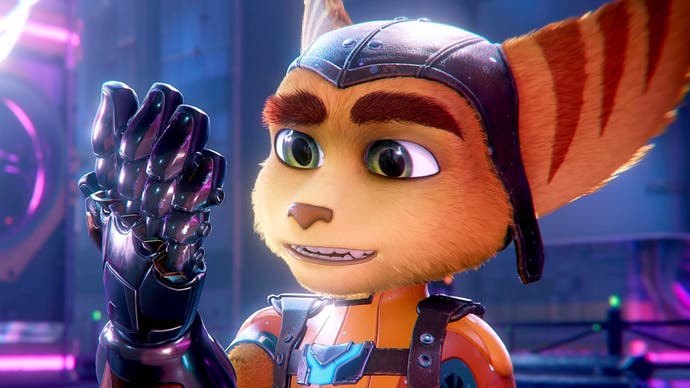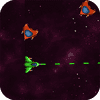DF Weekly: why Ratchet and Clank is most importantly crucial for the future of PC video gaming
How can a video game built on cutting-edge PS5 hardware function on various PC systems?

We were expecting a rather modest edition of DF Direct Weekly because, on the surface, recent news hasn’t exactly been crammed with gigaton news announcements. However, the news that Ratchet & Clank will be coming to PC next month has changed all of that. The success of the transfer is crucial to the future of the PC format even though the game may not have been designed with the core PC audience in mind.
If that sounds a bit over the top, allow me to explain. The new consoles share several features with personal computers, including x86 processors, Radeon graphics, and SSD storage. Prior to the release of the PlayStation 5 and Xbox Series X in 2020, these were truly fundamental components of a standard video gaming PC for a number of years. Cog & Clank heavily relies on PS5-exclusive features, and their PC equivalents have neither been created nor put to the test in a triple-A release. That may change with Cog and Clank.
Let’s clarify the challenge at hand. The video game from Insomniac is made specifically for the PlayStation 5. It depends heavily on two components of the PlayStation 5: its solid-state storage and its hardware decompression obstructs. With its plentiful aesthetics, ultra-fast loading, and portal mechanic that genuinely zips you in between measures inside the blink of an eye. The decompression obstructs sight after losslessly decompressing the information for the video game to use. The SSD floods in information at lightning speeds.
On the PC side of things, traditional storage APIs still urgently need to be updated, and there are no hardware counterparts to the hardware compression obstructs, indicating that designer Nixxes must use new innovations to produce services that will scale across a variety of PC hardware. It might go horribly wrong—and it did with The Last of United States Part 1’s PC port, which is much less dependent on the clever hardware of the PS5. How is it possible for Ratchet and Clank to function on a PC, let alone across a diversity of PC hardware?
The Ratchet and Clank PC version situation receives a lot of attention in today’s DF Direct Weekly!
- 00:00:00 Introduction
- 00:01:08 News 01: Ratchet & & Clank: Rift Apart pertaining to PC!
- 00:19:38 News 02: Nvidia demos AI-generated NPC discussions
- 00:37:54 News 03: Dolphin emulator obstructed from Steam release
- 00:44:41 News 04: Redfall’s advancement concerns in-depth
- 00:54:56 News 05: HDMI 2.1 capture cards revealed – however there’s a catch!
- 01:02:27 Supporter Q1: What are your forecasts for next week’s Xbox display?
- 01:07:52 Supporter Q2: Does XMP make a huge distinction on DDR5 RAM?
- 01:10:36 Supporter Q3: Are plasma TVs practical for top quality retro video gaming?
- 01:14:54 Supporter Q4: Why does not the Switch assistance HDR? Could it be consisted of in a Switch 2?
- 01:16:32 Supporter Q5: Are we in a downwards spiral of decreasing designer output and GPU stagnancy?
- 01:22:34 Supporter Q6: If a video game performs at a locked 30fps or 60fps, exists any advantage to setting your console to 120Hz output?
- 01:25:55 Supporter Q7: Has Jensen’s prediction been satisfied currently? Is Gran Turismo 7 ever going to strike PCs?
It is unclear exactly how Nixxes plans to implement this port, but adopting Naughty Dog’s “option” in The Last of the United States Part 1 will not work. Because of this, the ‘completely free’ decompression work that would have been conducted on the PlayStation 5 hardware was instead transmitted to the CPU, resulting in an extremely high processor overhead and indicating that the 60 fps standard developed in the PS5 variation was out of the question for equivalent PC parts. As you play, the video game streams in and decompresses data, which can overload less capable hardware and reduce CPU efficiency across the board. It’s a service that isn’t ideal because Ratchet and Clank can’t utilise it at all because it’s a video game.
From our perspective, using Microsoft’s DirectStorage API created for DirectX 12 Ultimate is the only sane way to make Ratchet run optimally on PC. This allows both CPU and GPU decompression, and in the present, we would like to see Nixxes make use of the GPU decompression portion of the Ratchet and Clank formula. In essence, the GPU in a PC takes over the duty carried out by the hardware decompression barriers on the PS5, which must deliver essentially identical results. Speaking on a PC produced some promising DirectStorage results, but they were actually achieved through CPU-driven decompression. If GPU-based decompression is used by Nixxes, it will be a first for the triple-A PC industry.
It will also be essential, fundamental work going ahead because Sony’s first-party studios will only put greater pressure on the hardware and demand more of the SSD and decompression obstructs. It’s important to keep in mind that, despite being a PS5 game, Ratchet & Clank plays well even with low bandwidth, as demonstrated by our own tests using a synthetically slowed-down PCIe drive in the console. The decompression equipment is most likely handling the majority of the labor-intensive work. Consider that to be equivalent to DirectStorage at this time, and the work will be done in performing it once more on the upcoming PC ports.
The Project Q portable and the Sony PlayStation 5 display were extensively covered in DF Direct Weekly #113.
- 00:00:00 Introduction
- 00:01:15 News 01: Sony display wrap-up!
- 00:40:02 News 02: Alan Wake 2 impresses, however why is it digital-only?
- 00:52:06 News 03: Project Q streaming portable exposed
- 01:05:45 Supporter Q1: Nvidia’s server GPUs appear in heavy need, so might the business shift resources far from video gaming?
- 01:14:09 Supporter Q2: What’s the very best method to determine and interact the idea of frame-time stability?
- 01:23:44 Supporter Q3: Isn’t the 4060 Ti a lot more remarkable when you bring DLSS 3 into the photo?
- 01:27:10 Supporter Q4: Could John make a video on running contemporary video games on customer grade CRT display screens?
We anticipate to observe a variety of testing across a great lot of different storage providers, from SSDs to SD cards to the same 5400rpm laptop HDDs used in the PlayStation 4. This is assuming Nixxes is using GPU-accelerated DirectStorage in Ratchet and Clank. Since there are essentially two components to the formula for making GPU-based DirectStorage as performant as the alternatives found in both the PlayStation 5 and Xbox Series consoles, it will also be crucial to test with a variety of graphics hardware. Simply put, we’re excited to test this out and see how scalable it is—after all, Ratchet and Clank can’t just run on PC hardware that’s equal to console hardware—it needs to run over a wide range of different PC components. Fortunately, Nixxes is handling this project and they are knowledgeable with scaling on PC technology. Suffice it to say, we are very excited to check this one out.
There are other topics as well, not least Nvidia’s demonstration showing a gamer genuinely interacting with an NPC, whose reactions (and even matching facial expressions) are powered by AI. The implications of this port control conversation are discussed in DF Direct Weekly #114. We spend a lot of time discussing the implications, debating if this is really ideal, and weighing the advantages and disadvantages of genuinely conversing with AI characters. Naturally, I’d start by asking, “Who is the best lord?” (Alexa actually has the right answer). We also address the current HDMI 2.1 capture card specifications, which, regrettably, do not permit HDMI 2.1 capture but do support passthrough features, and we provide our own replies to Jason Schreier’s most recent Redfall report.
Due to the recent lack of an accompanying post due to the recent public holiday in the UK, I have also included DF Direct Weekly # 113 on this page. On the internal gamer of Eurogamer, there are fewer adverts, which is something to take into account! Consider joining the DF Supporter Programme, where members receive early access to all Directs in both video and audio form, as well as the opportunity to make suggestions and feedback and help shape the programme. You’ll also be helping us create “content” like John’s excellent System Shock remake video, which just wouldn’t happen without your help and certainly not to the same degree of quality. Join us.

























